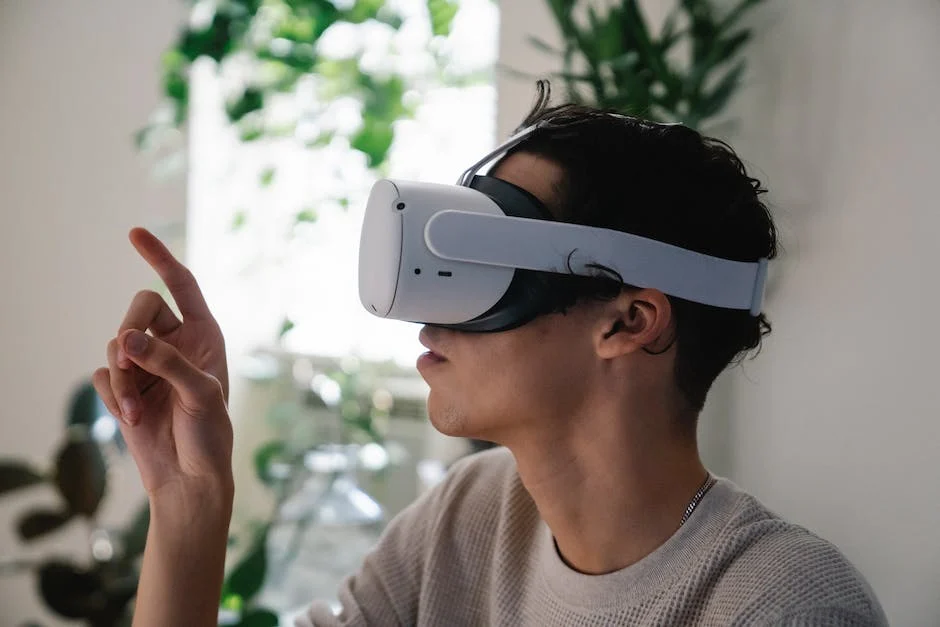Introduction to VR in education
Virtual reality (VR) is transforming the landscape of education, offering immersive and interactive experiences that enhance learning like never before. By introducing VR technology into classrooms, students are able to explore and engage with subjects in a whole new way. From virtual field trips to historical sites, to dissecting a virtual human body, VR opens up a world of possibilities for educators and learners alike. This innovative tool not only captivates students’ attention, but also improves their retention and understanding of complex concepts. With VR, education becomes more engaging, interactive, and accessible, paving the way for a truly transformative learning experience.

Benefits of using VR in the classroom
Using virtual reality (VR) in the classroom has numerous benefits that are transforming the way students learn. One of the key advantages of VR is its ability to provide immersive and interactive experiences, allowing students to explore subjects in a whole new way. Whether it’s exploring ancient civilizations, diving into the depths of the ocean, or even dissecting a virtual frog, VR brings learning to life and engages students in a way that traditional methods cannot. Additionally, VR can cater to different learning styles and abilities, making education more inclusive and personalized. By creating a stimulating and engaging learning environment, VR is revolutionizing education and paving the way for a more interactive and effective way of learning.
Enhancing student engagement and motivation
Enhancing student engagement and motivation is one of the key ways that virtual reality (VR) is revolutionizing education. VR technology allows students to immerse themselves in a virtual world, bringing their learning experience to life. Whether it’s exploring ancient civilizations, conducting virtual science experiments, or practicing real-life skills in a simulated environment, VR provides a level of interactivity that traditional methods simply can’t match. This increased engagement and motivation not only improves student comprehension and retention but also fosters a love for learning that extends beyond the classroom. With VR, education becomes an exciting adventure, igniting curiosity and inspiring students to explore the limitless possibilities of knowledge.
Improving learning outcomes with VR
Virtual reality (VR) is revolutionizing education by enhancing learning outcomes in ways never before possible. Through the use of immersive technology, VR creates a simulated environment that allows students to engage with educational content in a whole new way. Studies have shown that incorporating VR into the classroom can improve comprehension, retention, and overall student engagement. By providing a hands-on and interactive learning experience, VR enables students to explore complex concepts, visit historical landmarks, and even conduct virtual experiments. This innovative approach to education not only makes learning more enjoyable but also ensures that students gain a deeper understanding of the subject matter. With VR, the possibilities for education are limitless, opening up a world of opportunities for students to learn and grow.
Expanding educational opportunities with VR
Virtual reality (VR) has emerged as a powerful tool in revolutionizing education by expanding educational opportunities. With VR, students can now explore distant lands, dive deep into historical events, and even travel through space, all from the comfort of their classroom. This immersive technology offers a level of engagement and interactivity that traditional teaching methods cannot match. By providing a simulated environment, VR enables students to have hands-on experiences, stimulating their curiosity and enhancing their understanding of complex subjects. Moreover, VR allows educators to personalize the learning experience, catering to each student’s unique needs and learning styles. As VR continues to advance, it holds immense potential to transform education and create a more inclusive and interactive learning environment.
Examples of VR applications in different subjects
Virtual reality (VR) is rapidly transforming the landscape of education, offering immersive and interactive experiences that enhance learning in various subjects. In science, VR allows students to explore the human body or dive into the depths of the ocean, bringing complex concepts to life in a captivating way. In history, VR enables students to step into historical events and visit ancient civilizations, fostering a deeper understanding of the past. In geography, VR takes students on virtual field trips to exotic locations, providing a global perspective without leaving the classroom. These innovative applications of VR not only engage students but also promote critical thinking and problem-solving skills, revolutionizing the way we educate the next generation.
Overcoming challenges and limitations of VR in education
Overcoming challenges and limitations of VR in education is key to fully harnessing the potential of this groundbreaking technology. While virtual reality has the power to transform the way we learn, there are certain obstacles that need to be addressed. One major challenge is the cost of VR equipment and software, which can be prohibitive for many educational institutions. Additionally, there is a need for high-quality educational content that is specifically designed for VR, as repurposing traditional learning materials may not fully leverage the immersive nature of the technology. However, by investing in accessible and affordable VR solutions, developing tailored educational experiences, and providing proper training for educators, we can unlock the true educational value of VR and open up a world of new possibilities for students of all ages.
Implementing VR in schools and universities
Implementing virtual reality (VR) in schools and universities is transforming the way students learn and engage with educational content. By immersing students in virtual environments, VR technology offers a unique and interactive learning experience that goes beyond traditional textbooks and lectures. Whether it’s exploring ancient civilizations, conducting virtual science experiments, or practicing real-life scenarios, VR enables students to fully immerse themselves in the subject matter, enhancing their understanding and retention. Moreover, VR promotes collaboration and problem-solving skills, as students can interact with their peers and teachers in virtual spaces. By embracing VR, educational institutions are embracing a powerful tool that is revolutionizing the way knowledge is acquired and applied.
